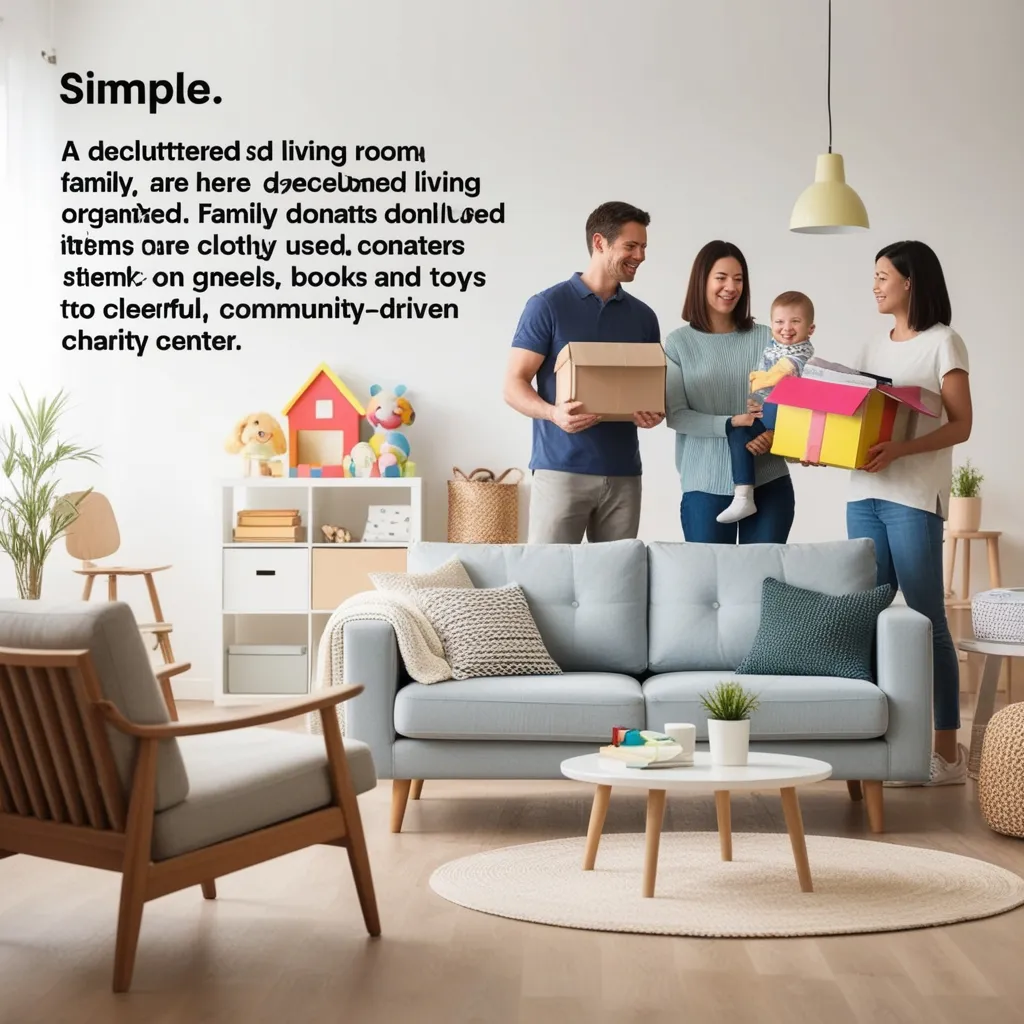Decluttering your home can seem like a herculean task, but it doesn’t have to be a grind. By donating your unused items, you’re not just making your space more breathable—you’re also extending a helping hand to those in need. It’s a win-win that leaves both you and your community a bit better off.
The Joy of Giving
When you start thinking about giving away household items, remember the old saying, “one person’s trash is another person’s treasure.” Donating stuff you don’t need anymore gives your belongings a delightful second lease on life. As a bonus, lots of charities offer home pickup services. So whether it’s secondhand clothes or that old couch, you can donate without breaking a sweat.
Benefits of Donating
Donating does more than free up space in your home; it makes a real impact on people’s lives. Take Habitat for Humanity, for example. This awesome organization uses donated furniture, appliances, and construction supplies to build affordable homes for families who need them. Who knew your old sofa could become someone else’s dream corner?
Charities like Big Brothers Big Sisters and Vietnam Veterans of America sell donated goodies to fund their amazing programs. Your barely-worn clothes and gently used household items could support mentoring for at-risk kids or help homeless and disabled veterans get back on their feet.
Where to Donate
There are plenty of places that would love to take your donations. Here are a few noteworthy ones:
- Habitat for Humanity ReStores: These shops sell donated furniture, appliances, and construction supplies, with proceeds going to build affordable homes.
- Salvation Army: With locations across the U.S., the Salvation Army accepts almost anything—from clothes to furniture to household items. All donations support their community projects.
- GreenDrop: This East Coast program takes clothes, household goods, electronics, tools, and toys. They even offer a free “Home Clean-Out” service to help you sort through your stuff.
- Dress for Success: Got some professional attire you no longer need? This group helps women gear up for job interviews and thrive in their workplaces.
How to Donate
Turns out, donating is pretty simple. Here’s a quick guide to get you started:
-
Identify What You Can Donate: Start by roaming through each room, picking out items you haven’t used in a year. If it’s been gathering dust, it’s probably safe to let it go.
-
Choose a Charity: Do some homework to find local charities that align with your values. Some groups specialize in things like shoes or jewelry.
-
Organize Your Donations: Create neat piles of clothes, books, electronics, and the like. This makes it easier to pack and prepare for donation.
-
Schedule a Pickup or Drop Off: Many charities come to you. If that’s not an option, find drop-off points. Just make sure to check what items they accept and any packing requirements.
-
Consider Friends and Family: Before sending your stuff to charity, see if any friends or family could use it. This spreads the joy even further.
The Environmental Impact
Donating isn’t just good for people—it’s also great for the planet. Passing on items that still have some life left reduces the need for new, resource-heavy products. For instance, donating clothes instead of tossing them helps curb the pollution churned out by the clothing industry.
Tips for Effective Decluttering
Decluttering can be overwhelming, particularly if you’re prepping for a move or just trying to clear up some space. Here are a few tips to help:
-
Create a Schedule: Break your decluttering into small, manageable goals. A daily or hourly schedule can keep you from feeling swamped.
-
Go Room by Room: Tackle one room at a time. Make decisions about what to keep or donate in each room before moving to the next.
-
Pack and Prepare: Once you’ve decided what’s going, pack everything according to the charity’s guidelines. This way, you’re ready to roll when it’s time for pickup or drop-off.
The Joy of Letting Go
Parting with stuff can be tough, especially if it’s sentimental or was pricey. But try shifting your perspective: envision the happiness your items will bring someone else. Picture donating children’s books to a local library, adding to a young reader’s joy, or contributing to a school where kids may not have many resources.
Conclusion
Decluttering by donating unused items isn’t just about tidying up your space; it’s a powerful way to make a difference. It gives you a more peaceful living environment and helps those in need. By choosing charities thoughtfully and following easy steps, you can turn your clutter into someone else’s treasure. So next time you’re about to toss something, think about how it could brighten someone else’s day.






